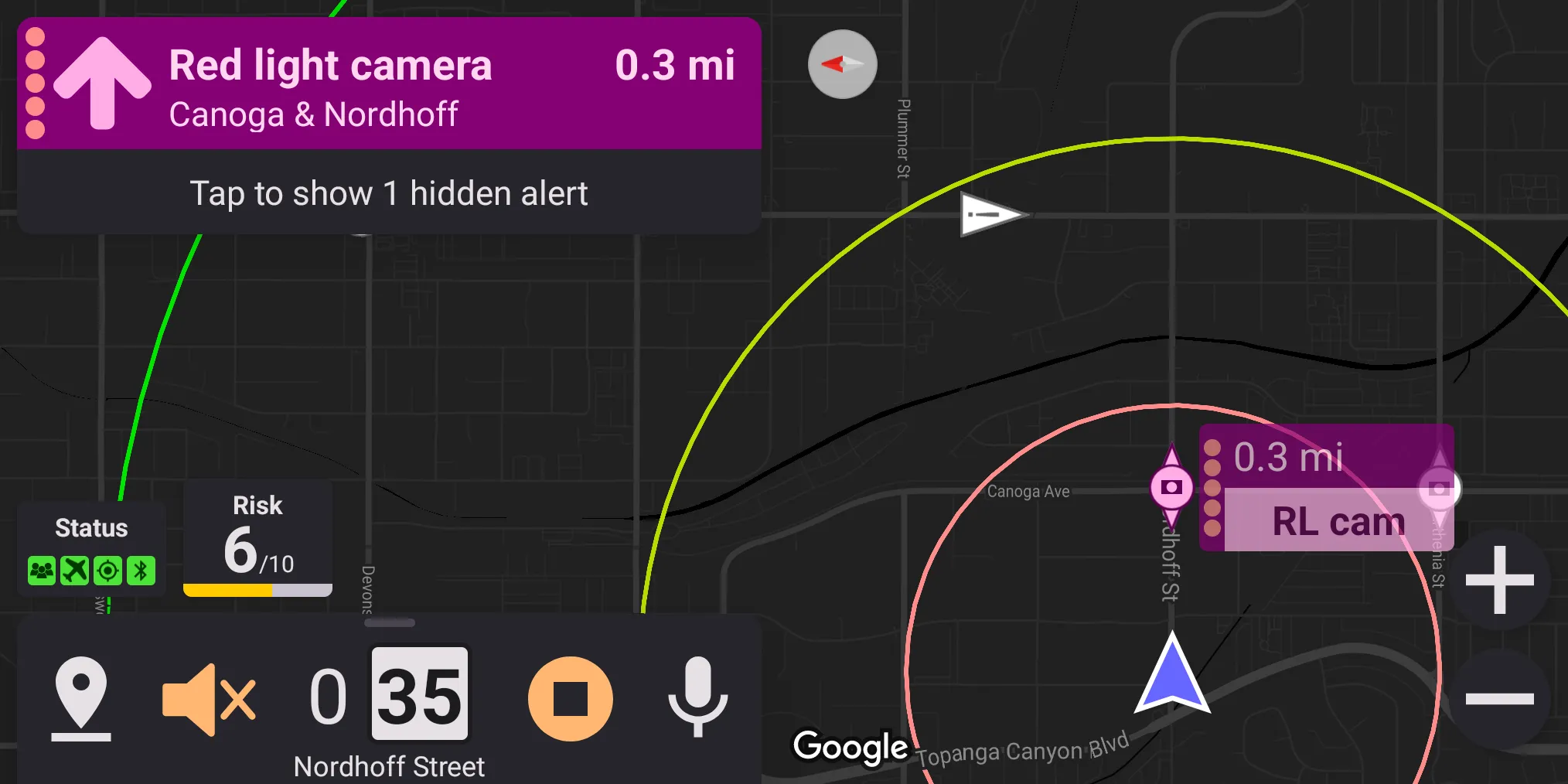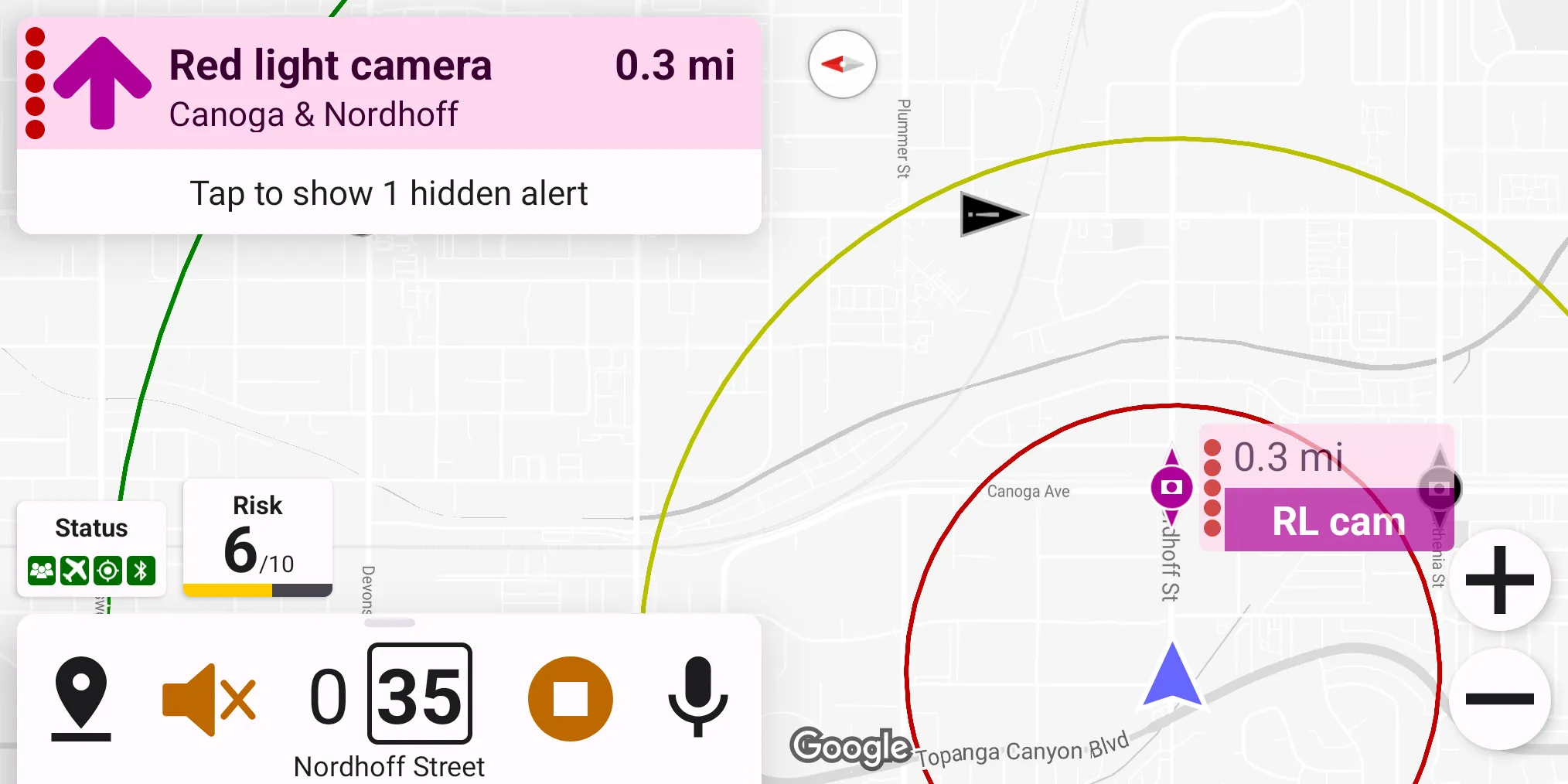Cameras
Configured in
Settings → Cameras alerts.
Highway Radar can alert on various enforcement cameras. Currently, Highway Radar supports the following types of cameras
- Red-light cameras
- Speed cameras
- Speed + red-light cameras
- Lane control cameras
- Disatance control cameras
- Overtaking cameras
- Pedestrian crossing cameras
- Height control cameras
- Weight control cameras
- Entrance control cameras
- Bus lane cameras
- Dummy cameras
- Section control cameras
(limited support – only announces section boundaries, doesn't measure an average speed) - Multipurpose cameras (any combination of the above)
Each of the types above can be enabled or disabled independently in the Enabled cameras type preference.
Cameras Data Sources
Highway Radar supports two primary data sources for cameras: a cameras database provided by Highway Radar and third-party cameras databases.
Cameras Provided By Highway Radar
The Cameras database provided by Highway Radar is the default option and doesn't require any configuration – it works straight out of the box. The camera locations are sourced from the POI-factory.
The default database has several limitations
- It only covers U.S. and Canada
- It doesn't contain enforcement direction
- It only has Speed, red-light, and speed + red-light enforcement cameras
To overcome these restrictions, you have to use a third-party cameras database
Thirdparty Cameras Database
Highway Radar supports side-loaded third-party cameras databases. The only supported format is an ExCam format explicitly designed for Highway Radar. The protocol is open, and its technical description is publicly available. Currently, there is no public converter from other database formats; however, there are plans to create one.
There are two ways to import side-loaded cameras into the application; both are documented in the ExCam protocol description
- Loading from a URL
Highway Radar downloads the database from a provided URL; every time the application starts, it checks if a database update is available. If there is, Highway Radar automatically downloads the latest version in the background. - Loading from a file
Highway Radar accepts a file containing the entire database. This way doesn't use any data; however, it doesn't support automatic updates.
Cameras Directions
The cameras database may specify enforcement directions for the cameras (also known as "approach vectors"). Highway Radar may treat this information differently, depending on the Consider camera direction preference value.
- Respect direction from the database
In this mode, alerts are only issued then the driver's direction is aligned with the camera direction. The shape of the current street is also considered, so if the road bends right before the camera, the application would still alert. - Respect direction from the database and alert on opposite cameras
This mode is similar to the previous one. The only difference is that the application also alerts on the opposite cameras. This mode can compensate for potential database mistakes, where one camera can enforce both lanes simultaneously. Note that the application doesn't alert cameras with the direction perpendicular to the current street in this mode. - Ignore direction, alert based on proximity only
In this mode, Highway Radar completely ignores camera directions from the database. The application alerts on any camera located on the driver's way.
Alerting Distance
There are different alerting distances for speed and non-speed cameras. This distance only defines when the alert becomes active. All the notifications are configured separately in the notifications section of this book.
An Alert on the same street only preference defines whether Highway Radar should consider road graph data when building alerts. When this preference is enabled, the algorithm is similar to hazards alerts with the "same street only" alerting strategy. When it is disabled, the algorithm is similar to hazard alerts with the "simple" alerting strategy.

